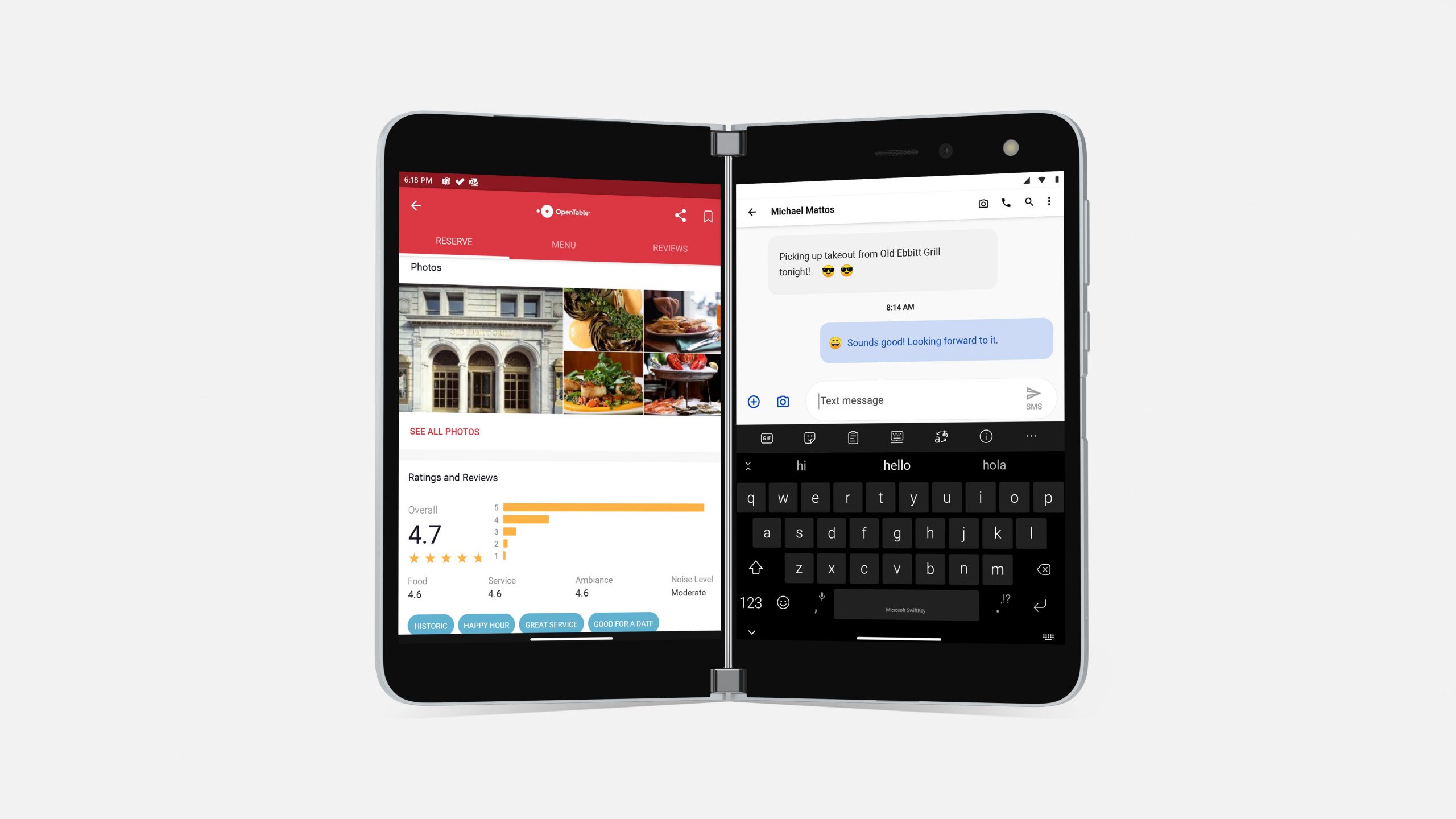- Microsoft announced that the Surface Duo, its first foldable smartphone, will launch on September 10 for $1,400.
- The device consists of two separate 5.6-inch displays that work together to form one 8.1-inch display when opened.
- Microsoft is touting the phone’s software as one of its big selling points. It showcased how apps will work across both screens, and how content can be easily transferred between displays.
- The Surface Duo also comes with a 360-degree hinge that enables it to open like a book, fold all the way back like a smartphone, and assume other forms as well.
- But Microsoft is entering an increasingly competitive market that’s already becoming crowded with rival devices from Samsung, Huawei, and Motorola.
- It’s also unclear whether there’s consumer demand for such devices, especially as less expensive phones are becoming more popular.
- Visit Business Insider’s homepage for more stories.
Smartphone giants like Samsung, Huawei, and Motorola have an unlikely new challenger in the foldable phone market: Microsoft.
The company unveiled its first foldable phone, the Surface Duo, back in October 2019, but only just announced on Wednesday that the device will officially launch on September 10 for $1,400 with preorders starting on August 12.
The Surface Duo represents Microsoft’s first major re-entry into the smartphone market since it abandoned its Windows Phone platform. Microsoft is positioning the Surface Duo as a productivity device, much like the rest of its Surface lineup, designed for those who frequently multitask on their mobile device.
As its name implies, the Surface Duo consists of two 5.6-inch AMOLED screens connected by a 360-degree hinge. Unlike other foldable phones on the market, the screens remain physically separated even when the phone is fully opened, but Microsoft says the two screens will still function as one large 8.1-inch display. Microsoft is calling it the thinnest foldable mobile device yet.
It runs on Google's Android operating system, and will support the ability to run apps separately on each screen or span a single app across both displays.
Microsoft is the latest major tech company to make a big bet on foldable gadgets that provide the benefits of both smartphones and tablets in one device. Samsung recently announced its third foldable phone, the Galaxy Z Fold 2, which also has a clamshell design but differs from the Surface Duo in many ways.
Huawei also debuted its first foldable phone in 2019, the Mate X, which includes flexible screens that fold outward, almost bending like paper. And Motorola revived its beloved Razr flip phone from the early 2000s as a foldable smartphone last November.
Microsoft, however, is banking on the notion that combining two standalone displays that can work together as one will be more beneficial than launching a device with a flexible screen that folds in two. This enables Microsoft to use thicker glass for the screen and makes it compatible with the same Surface pen it offers for its tablets.
Still, it's unclear how appealing foldable smartphones are to consumers. The smartphone industry as a whole seems to be transitioning towards mid-tier phones and away from four-figure flagships. According to market research firm Gartner, foldable phones are only expected to account for 5% of high-end smartphone sales by 2023.
Here's a closer look at how the Surface Duo works.
Microsoft's Surface Duo opens and closes just like a book. Unlike Samsung's Galaxy Fold and Galaxy Z Fold 2, there's no screen located on the outside of the device.
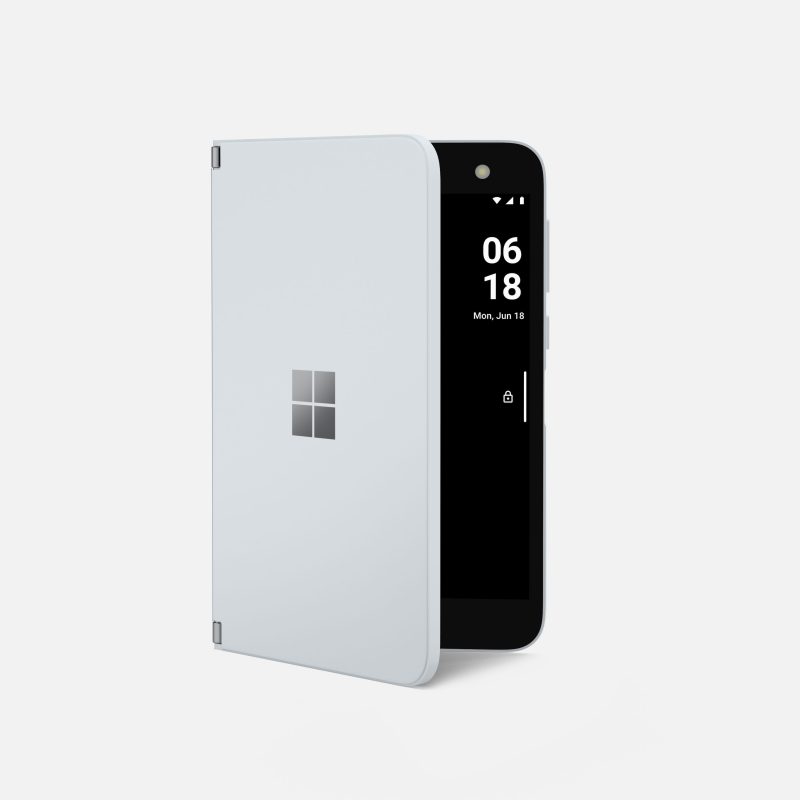
Since the Duo has a 360-degree hinge, it can be used in a variety different modes. You can hold it vertically like a book, open it halfway like a laptop, open it fully like a tablet, fold it all the way back so that it's roughly the size of a smartphone, or fold it backwards like a tent.
There are two batteries powering the device, and the company says the Duo should be able to provide all-day battery life.
Microsoft is touting the phone's ability to intelligently run apps in a way that makes the most sense depending on how you're using it.
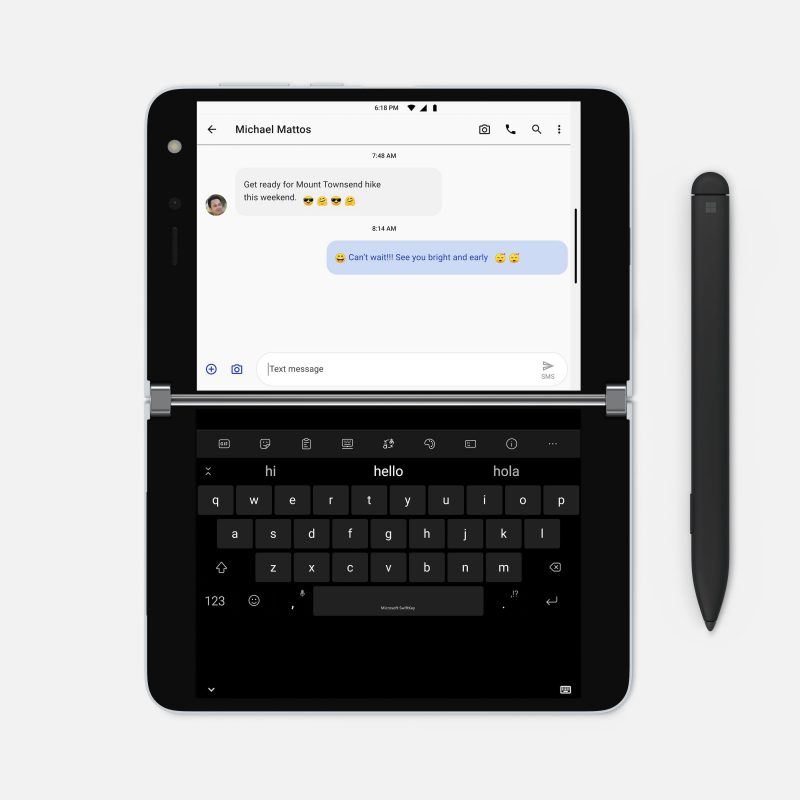
In the image above, for example, you'll notice a messaging thread occupies one screen while the second screen becomes a keyboard.
The same holds true when clicking on links from apps as well.
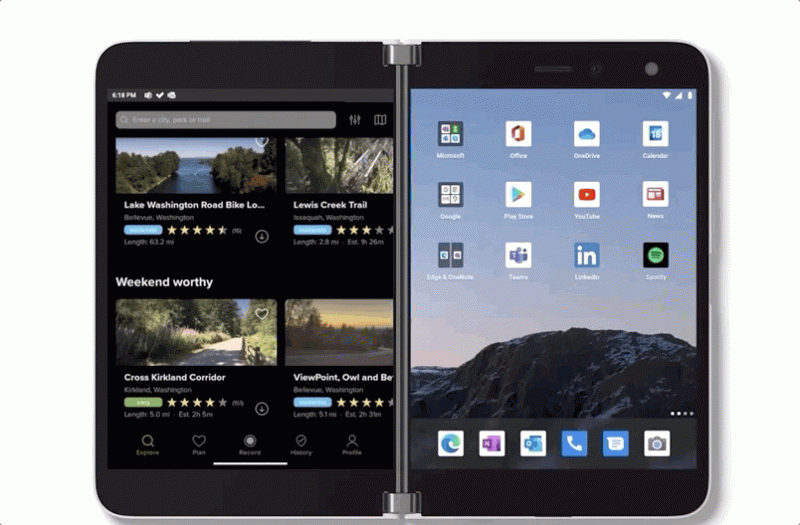
Selecting a trail in the hiking app AllTrails, for example, prompts the phone to open the trail in Google Maps on the second screen. Microsoft says this should happen automatically with no special treatment from developers.
On the Surface Duo, you'll be able to run apps separately alongside one another on the two screens or span an app across both screens.
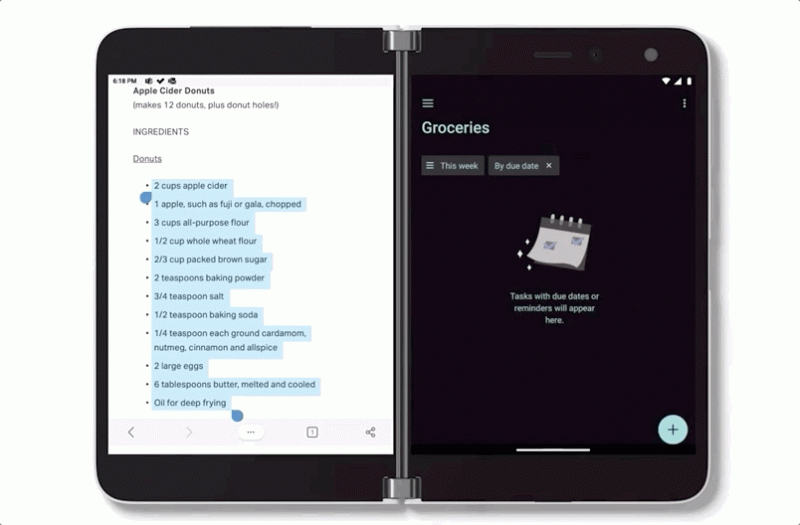
As shown above, you can also copy content between apps across the two screens.
How the Surface Duo makes use of its two screens will be critical for its success.
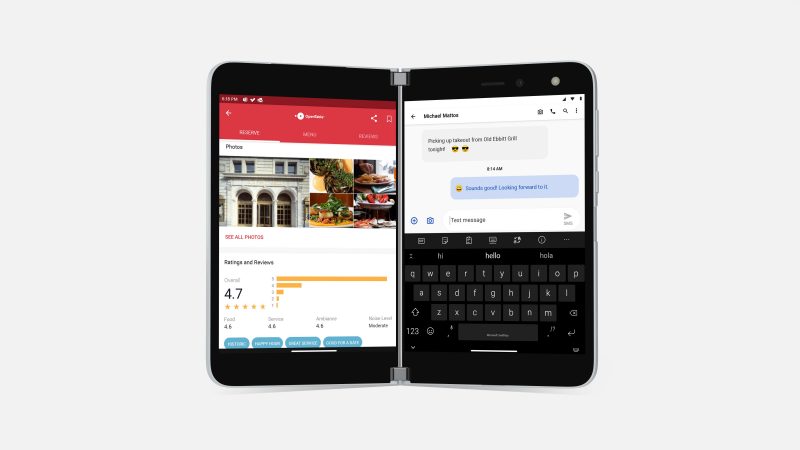
The Duo's hinge seems like it could be more noticeable than the folded crease in a device like the Galaxy Fold. But having two full-sized screens that work together looks like it might offer a superior multitasking experience over the original Galaxy Fold. Running three apps across one 7.3-inch display felt a bit cramped.
Based on what we've seen about the Surface Duo, it seems like Microsoft has thought carefully about how to optimize the app experience across both screens. The company is clearly trying to make the Duo function as more than just two smartphone screens joined together; it's also thought about how people might make use of that extra space.
The Surface Duo is also coming at a time when people are more reluctant to buy high-end smartphones.
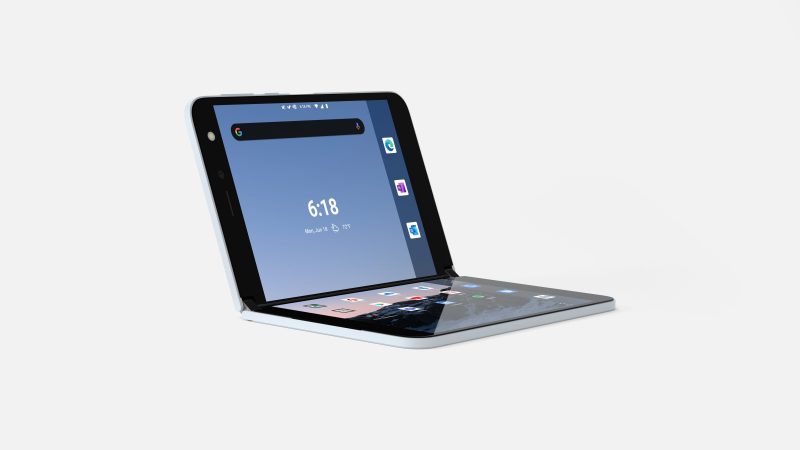
The $1,400 Surface Duo is launching at a time when cheaper smartphone are becoming increasingly popular, especially as consumer spending is changing following spikes in unemployment stemming from the COVID-19 pandemic.
That could make the Duo a tough sell, especially considering it doesn't have the most top-of-the line specs: it lacks 5G connectivity, runs on a slightly older Qualcomm processor, and has an 11-megapixel camera at a time when companies like Samsung are cramming 108-megapixel sensors in their smartphone cameras.
But if you're interested in the Duo, it's probably not because you're looking for the most powerful phone, or the mobile device with the best camera. It's because you're looking for something a bit different that combines the elements of a smartphone and a tablet without feeling too unwieldy. Whether it succeeds at this remains to be seen, but it's another indication that tech giants are trying to figure out the next major evolution of the smartphone.

